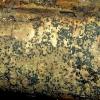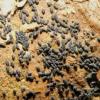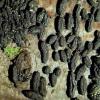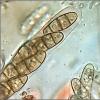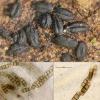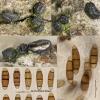
14-11-2025 18:31
 Lothar Krieglsteiner
Lothar Krieglsteiner
Hello,can somebody provide me with a file of:Rothe

14-11-2025 16:26
 Marian Jagers
Marian Jagers
Hello everyone, On dead wood of Cytisus scoparius

12-11-2025 09:25
 Viktorie Halasu
Viktorie Halasu
Hello, I need help with a pale terrestric Pseudom

11-11-2025 20:16
Bohan JiaHi, lastly I have found these tiny yellow decayin

09-11-2025 13:20
Hello.A tiny ascomycete, appearing as erupting gra

08-11-2025 00:29
 Francois Guay
Francois Guay
I found this species in Quebec, Canada, on herbace
Spores 18-22 x 7.
Looks like Hysterium pulicare, which is very common on oak here.
Norway, Tønsberg.
Per.

for determination of these "Hysterothecia", spores are the most important feature. There are two common species which mostly grow on bark of various trees: Hysterium angustatum and Hysterium pulicare. The latter one has beautiful bicolorous spores.
Regards,
Björn
Per

I don't know this taxon, Index Fungorum gave the name as legitimate name suggested in Fries as H. acuminatum. You have to check the descriptions provided in the literature.
Dimitar
Hi,
Yes, obviously H. angustatum ; of course ascospores are a good feature but we must be careful because other genus not so far away provide fungi with such ascospores. For example : Hysteropatella prostii or Mytilinidion tortile.
Synonymies, by E. Boehm :
Hysterium angustatum Alb. et Schw.
Alb. et Schw. 1805. Consp. Fung. Lusat.: 55.
Syn. :
Hysterium acuminatum Fries, 1823
Hysterium acuminatum var. alpinum Rehm (after Saccardo, 1883, & Rehm, 1896)
Gloniella ambigua Karst., 1891
Hysterium angustatum var. cerotoniae Toll, 1905
Hysterium eucalypti Phill. et Hark., 1884b
Hysterium karstenii Lohman, 1939
Hysterium lentisci Rolland, 1901
Hysterium pulicare var. angustatum Kunze (after Fries, 1823)
Hysterium pulicare var. totarae Sacc., 1908
Best wishes for 2018,
Alain
Per



